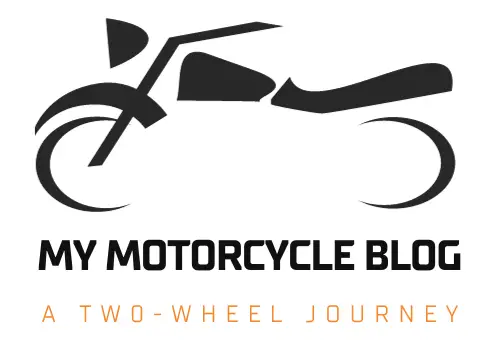NOTE: I finally got around to installing my new Nibbi Carburetor on my TaoTao TBR7. Here is the post: My TBR7 Nibbi Carburetor Installation Instructions (Hawk 250 info).
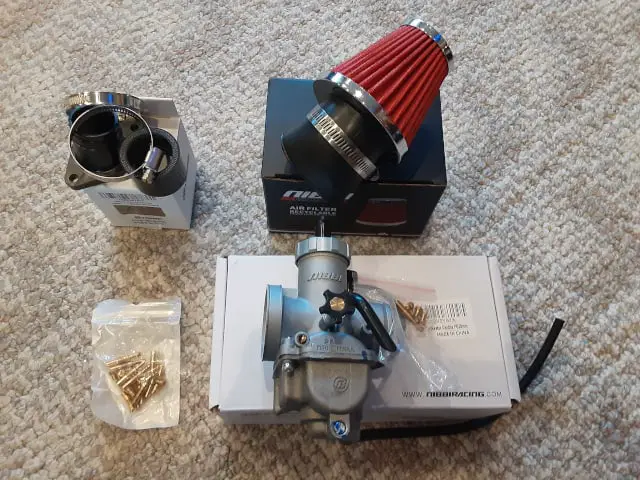
Here I compare my new Nibbi carburetor(PE30) to the TBR7 Stock Carburetor.
One of the first upgrades to new TaoTao TBR7 and RPS Hawk 250 owners is to upgrade the stock carburetor. I was advised to go to the Mikuni clone carburetor since this carb was a drop-in upgrade. However, I’ve wondered if I should have gone directly to the Nibbi racing carb (PE30) and was there a big difference between the Nibbi and the Stock carburetors. Here I plan to compare the Nibb carb against the stock TBR7 carburetor.
Background: The Stock Carburetor’s Reputation.
The stock carburetor comes with the Chonda’s, like the TaoTao TBR7 and RPS Hawk 250. This carburetor is known to run very lean, ensuring all fuel is combusted regardless of the final altitude the bike is operated in. This lean operation guarantees that the motorcycle can pass any air pollution law in the US.
However, I learned both the TBR7 and Hawk 250 (carbureted) isn’t street legal in California. Also, the Hawk 250(carbureted) isn’t street legal in New Jersey either. Due to air cleanliness laws?
So, the stock carburetor is a well-known design; the carb is stamped on the side, “PZ30”. A quick web search will find that this carburetor has a good history, but this post compares not the PZ30 carb but the stock my TBR7 came with. You’ll find out why some people do not like the stock carb, even if they are PZ30 fans.
Background: The Nibbi “Racing” Carburetor’s Reputation.
Anything with the name “racing” associated with their name should be well known for going fast. Well, I hope to give you a full review on the Nibbi carb after I get around to installing it onto my TBR7. However, again, Nibbi is known for racing, and Nibbi is known for waking up engines and getting the most out of them.
Not much I can say about the Nibbi brand carburetors, in general. However, I have read that the PZ30 might be “too much” for a Chonda (TBR7’s and Hawk 250) engine in the online motorcycle forums. Chonda engines are small, are only 229cc in size. Tuning the carburetor might be difficult but not impossible. Again, I hope to get to installing my Nibbi PZ30 carb and get back to you about it.
Carburetor Color Is Not A Performance Feature
Before I start making comparisons, I don’t want the color of the carburetors to be seen as a factor.
The stock carburetor’s color, or metal finish, is that of the TaoTao choice, and it’s bare metal, with a matte texture.
The Nibbi PZ30 Carburetor I choose has a flat matte grey finish. Kind of like the stock. The Nibbi also comes in shiny black with metallic red features. I wanted my new Nibbi to match the rest of the TBR7. I de-badged my TBR7 (See Previous Post: I Removed The TBR7’s Decals.), allowing it to look ‘duller’ than initially out of the box.
So I am not drawing similarities between the carburetors from their exterior color and finish, which was intentional for me.
Side By Comparison Of Nibbi and Stock Carburetors Shape.
As you can see, the stock carburetor isn’t much different in size compared to the Nibbi Carburetor.
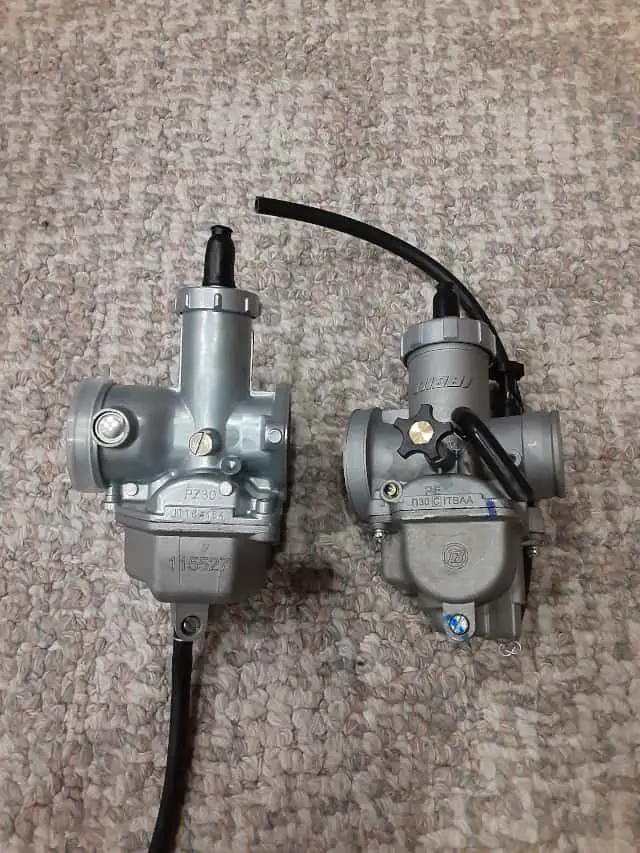
A simple glance at the carburetors shows the Nibbi is taller than the stock. Not sure if this is much of a performance issue, but I believe it’s taller due to internal dimensions differences and closing spring size differences. I will cover this more later, but it’s clear these are different carburetors.
Now that we touched on the exterior differences let’s continue in that direction.
Different Carburetor Choke Controls.
Choke control increases the fuel/air ratio to start engines. This increase can be accomplished by decreasing the airflow or increasing the fuel flow. I make this point since right out of the box; these carburetors achieve this increase in fuel/air ratio differently. I’ll cover it more later, but for further reading: https://en.wikipedia.org/wiki/Carburetor#Choke
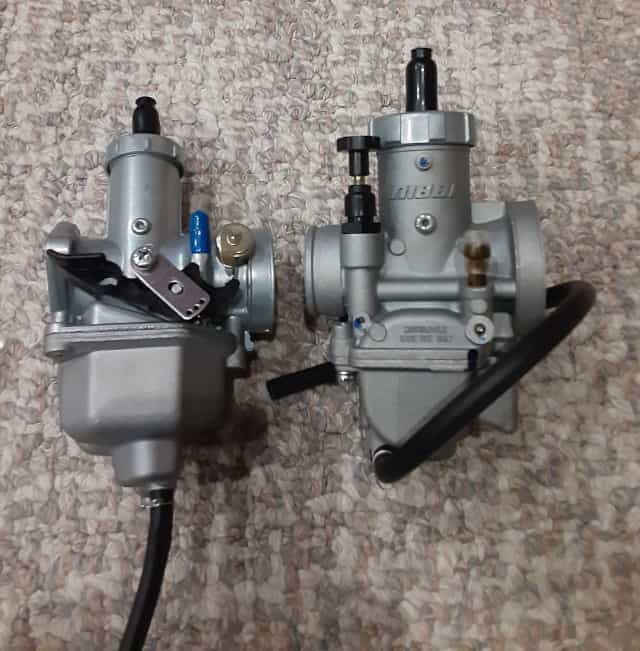
Stock Carburetor Choke Control:
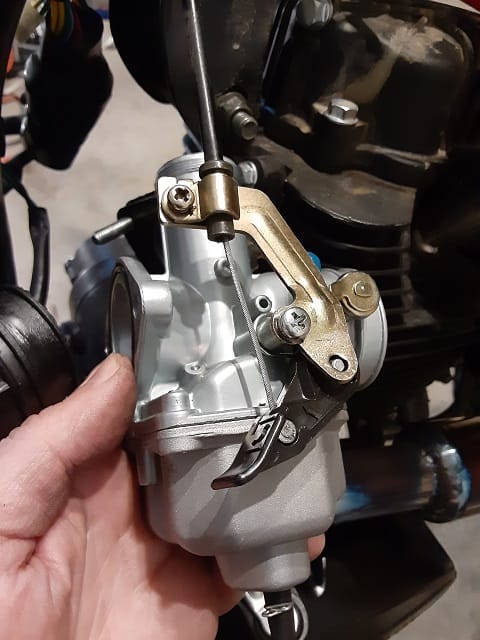
The Stock Carburetor has a lever that controls an airflow restriction plate. This lever was originally attached to a lever on the handlebar below the turn signal control.
As you can see, this remote control for the choke has been removed from this stock carburetor. I moved the controls to the new Mikuni carburetor(clone) installed on the motorcycle.
Nibbi Carburetor Choke Control:
The Nibbi Carburetor has a pull knob to control the choke feature of the carburetor. This knob locks up and down feels like friction. This control opens and closes an internal port I will cover later.
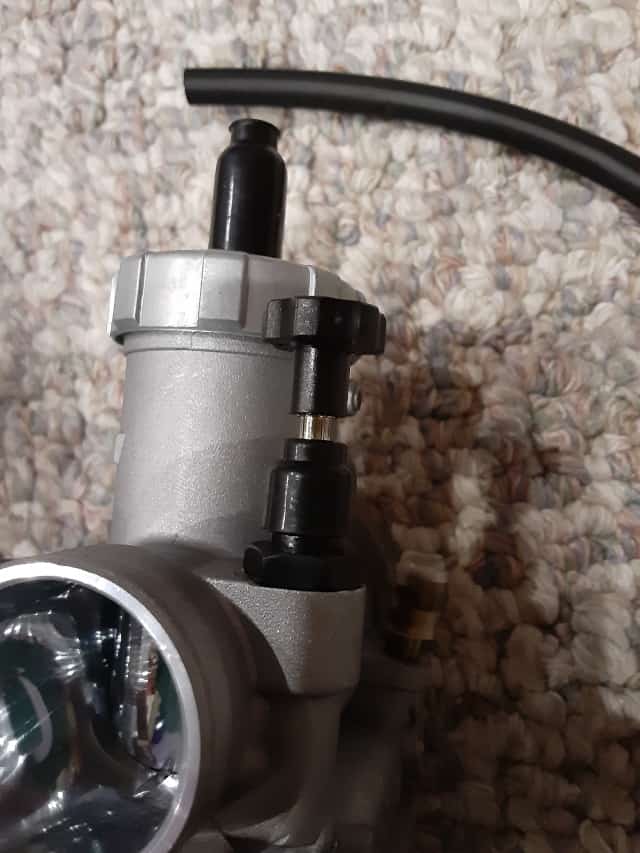
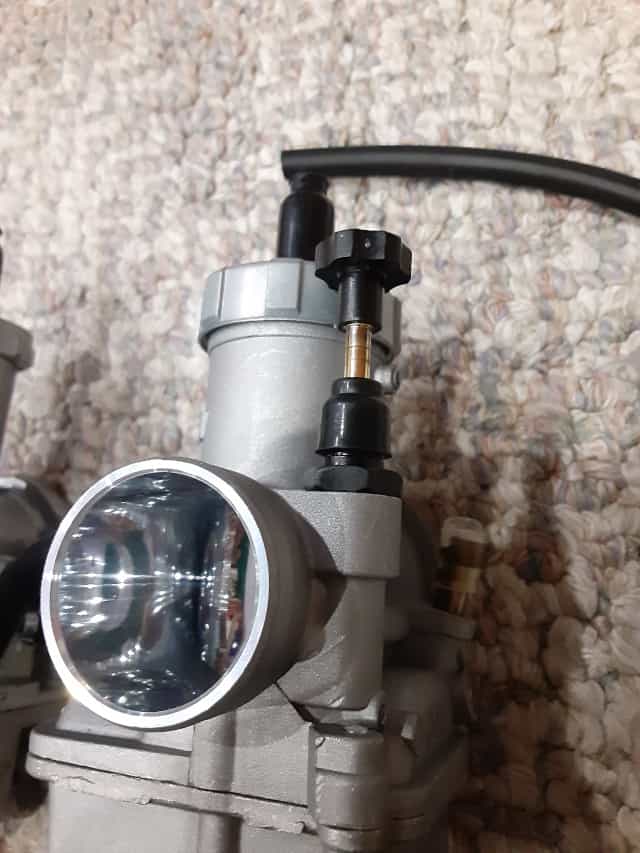
The Nibbi Carburetor doesn’t come with an easy way to integrate its choke operation with the current remote choke cable on the TBR7. I’ll live this since I only need it for a start-up with a cold engine, which is only required at the start of the ride.
Internal Shapes: Nibbi Carburetor vs. Stock Carburetor
The stock carburetor starts and ends with the carburetor inlet and outlet being very round. This shape is the same as the Nibbi carburetor.
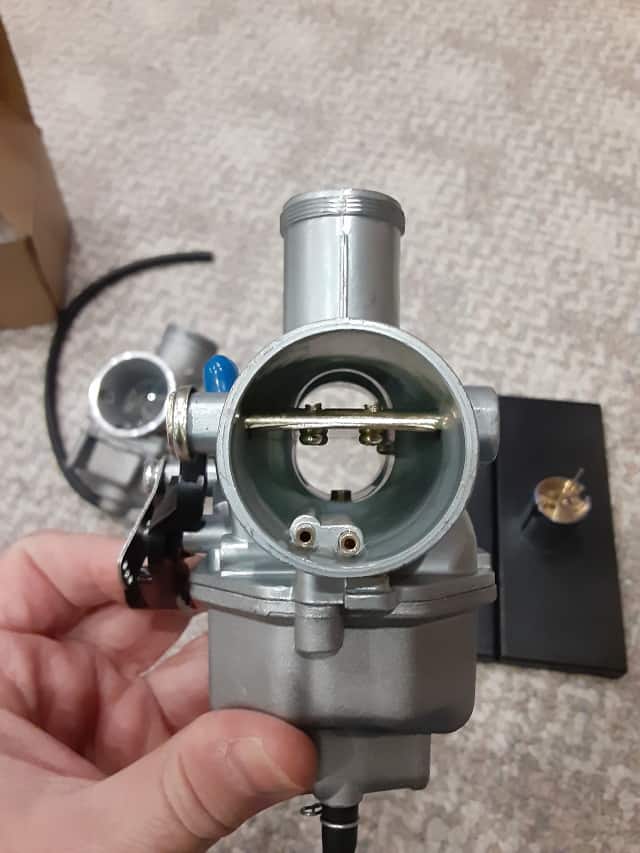
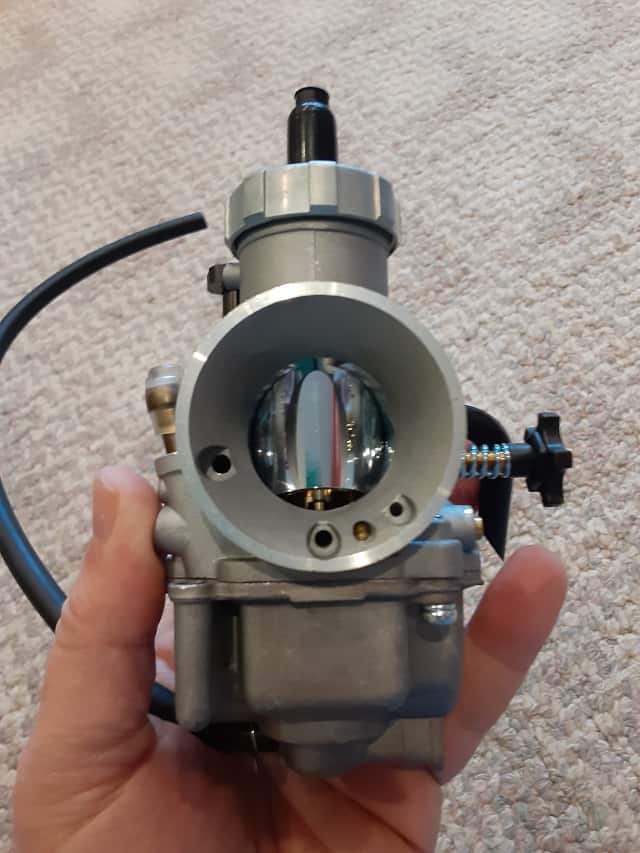
Both inlets are wide to funnel air into the carburetors(Nibbi more noticeable), with the outlet being smaller than the carburetor inlet. There isn’t much difference in the diameter of the carburetor outlets.
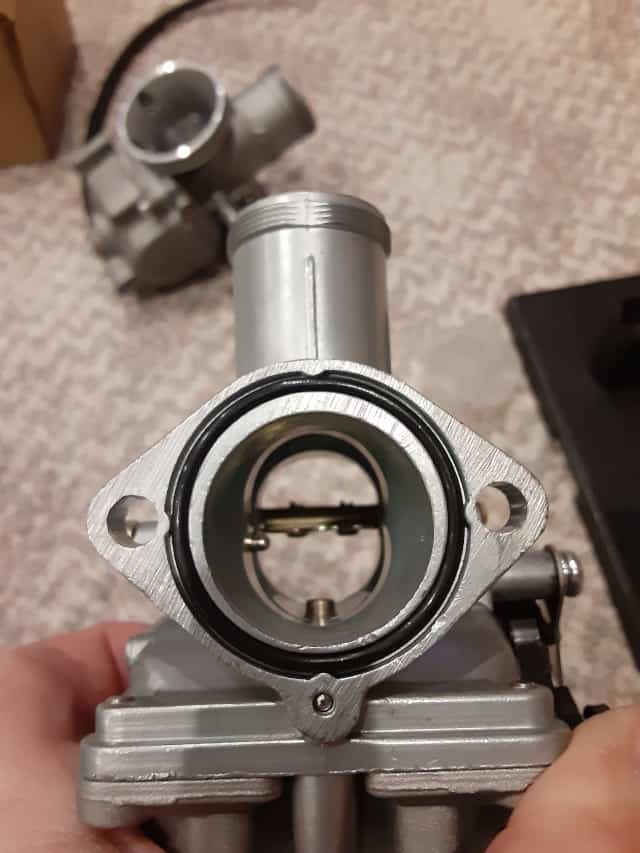
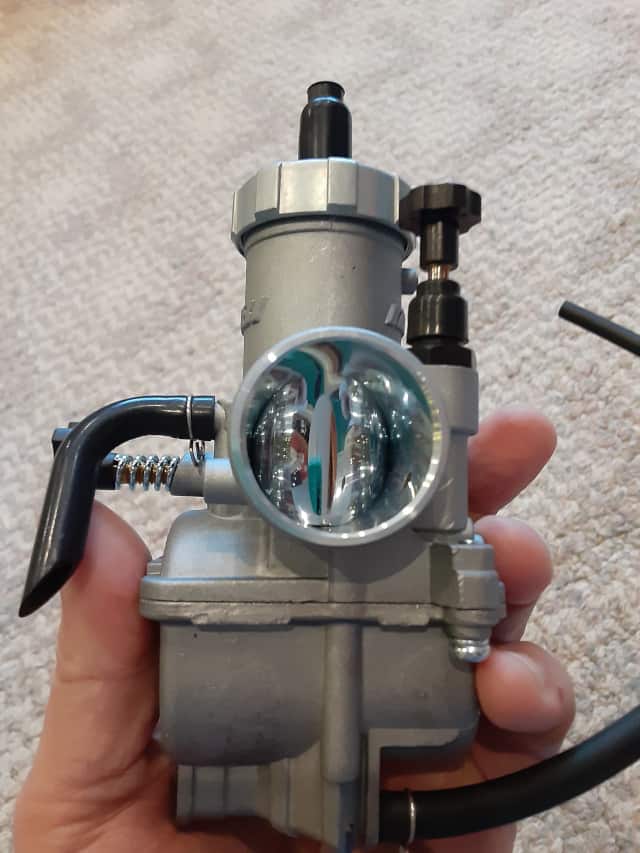
What is different is the stock carburetor narrows internally around the jets, restricting airflow. The narrowing of the internal airflow for the stock carburetor might be necessary to drop the pressure and draw more fuel into the air stream. I understand the principle but notice the Nibbi doesn’t do this.

Either way, the stock carburetor appears to restrict airflow to operate, while the Nibbi manages to function without such a narrow internal air channel.
Starting to see why the Nibbi is considered a “racing” carburetor. 😀
Nibbi Carburetor and TBR7 Carburetor Air Channels
Now I measured the outlet portion of both carburetors(outlet being smaller than inlet), and they were almost the same. Sorry for the bad pictures, but I got the dimensions on my caliper.
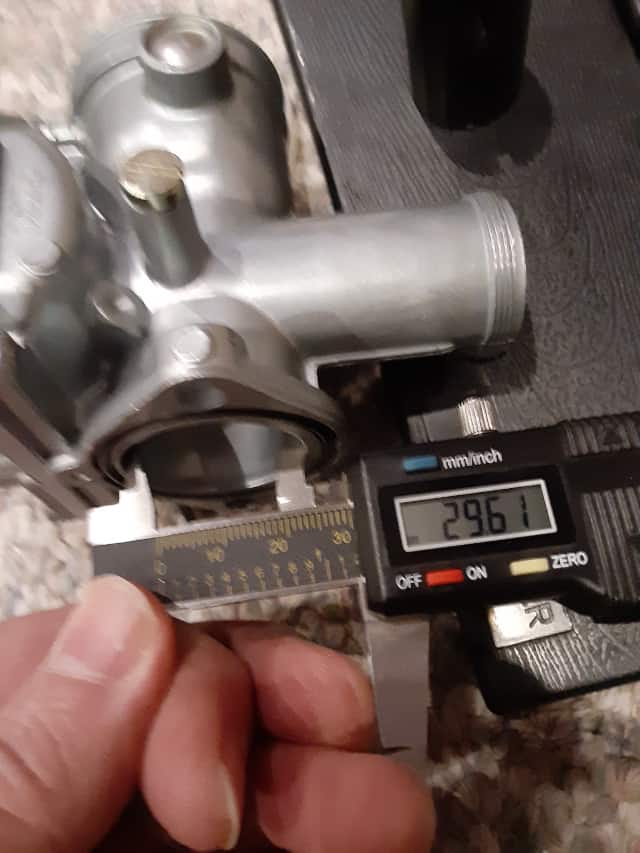
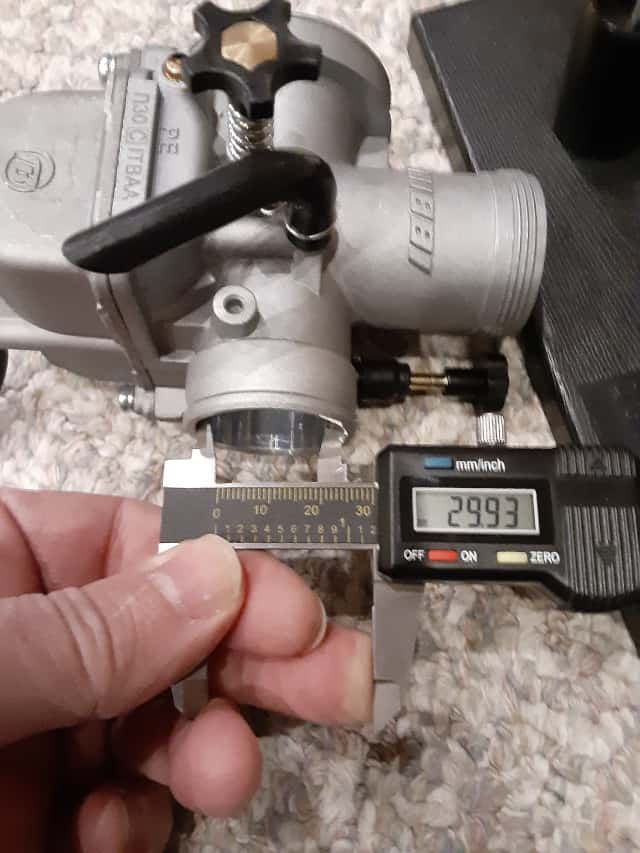
Therefore I didn’t see much difference with these air channel sizes.
However, the Nibbie has its outlet’s consistent internal air channel dimension. In contrast, the stock carburetor has a narrowing on the inside that could be a higher flow restriction.

Commons sense says more restriction, the more work the engine has to perform to breathe, why it’s recommended to use high flow low restriction air filters to extract more horsepower out of an engine.
Let these differences show how the Nibbi carburetor (PE30) might be a better choice for getting more horsepower out of the TBR7’s engine and into that back wheel.
I’ll discuss that significant obstruction in the way of inlet airflow, even when the choke is turned off, later.

Both Carburetor’s Internal Airflow Channel Surface
Now I’m only going to touch on this since I’ve found constructing information lightly.
If the airflow channel is smoother after fuel is injected, the outer layer of air(closest to the walls) doesn’t mix with the fuel. It results in an uneven mixing of fuel and air and not even power distribution in the engine cylinder.
However read, the smoother the airflow is, the easier it is for an engine to get that air and fuel into its engine chamber to extract energy.
This information seems contradictory. Good thing the internal surfaces are the same.
The TBR7 stock carburetor outlet is machined smooth with a matte finish.

The Nibbi carburetor outlet is highly polished for a very smooth surface.

Now the Nibbi looks prettier and looks like extra work was done to the surface for the shine, but unsure if it was worth the effort. For now, I like how the Nibbi Carburetor outlet looks.
Both Carburetor Bowl Comparisons
The big difference between the TBR7 stock carburetor and the Nibbi carburetor, the Nibbi carburetor allows access to the carburetor jets (pilot, needle, and main).
You can see the stock carburetor’s screws are blocked, and there are four sites.
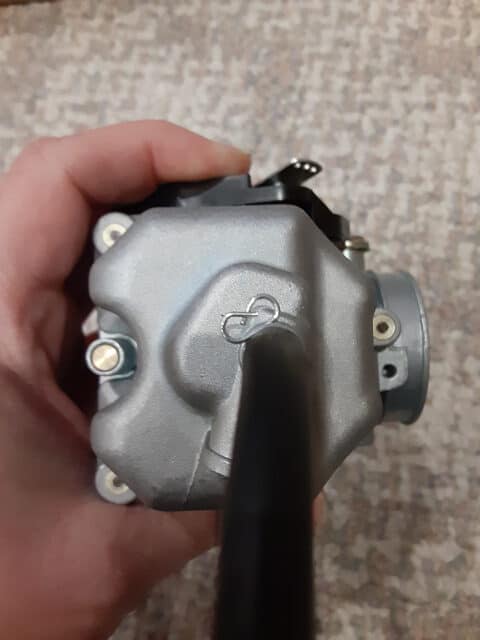
On the Nibbi carburetor (PE30), there are accessible screws(2) for fine-tuning the carburetor.
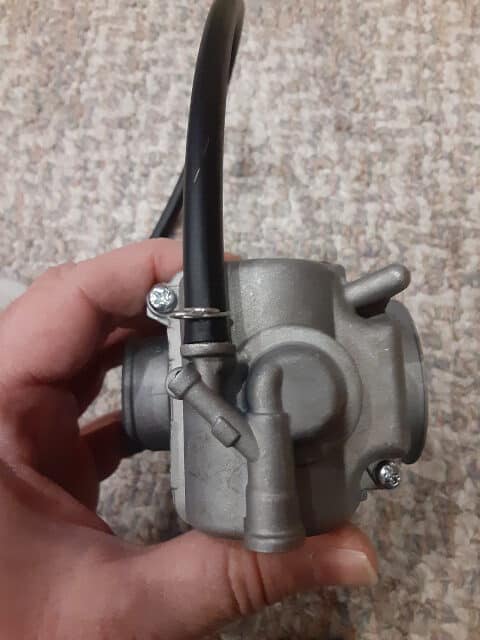
I have already mentioned I learned the TBR7 carburetor, like many Chonda bikes (Hawk 250, Brozz 250, etc.), is tuned to run very lean. This lean operation ensures fuel is fully consumed to ensure a very clean running engine.
I have also been warned operating an engine in a lean condition and then upgrading to a low restriction air intake, and exhaust system can further make the engine run leaner, possibly resulting in engine damage.
I am unsure about this warning about running my engine too lean, but one of the first upgrades I did was changing the TBR7’s stock carburetor to a Mikuni carburetor (“clone” VM-26). Be sure you research your motorcycle upgrades before making changes, or get expert help first as well.
Carburetor Jets (main, pilot, and needle) Comparison
This section is very short. The Nibbi carburetor jets are fully accessible once you remove the carburetor bowl, and this feature is excellent for tuning the motorcycle to run at its peak performance.
Now the why I am keeping this section short.
TBR7’s stock carburetor is sealed, meaning the bowl is not removable. The carburetor jets are not accessible, and therefore no fair comparison can be made without cutting open the stock carburetor.
Nothing to see here; time to move on. 🙁
TBR7 Stock Carb and Nibbi Carb Air/Fuel Mixture Screw
The Air/Fuel Screw On The TBR7 Stock Carburetor
Now again, this can be a very short section since the TBR7’s stock carb’s fuel-air mixture is blocked. Like its carburetor bowl, screws are blocked, and again to prevent changing the factory settings of the carburetor.
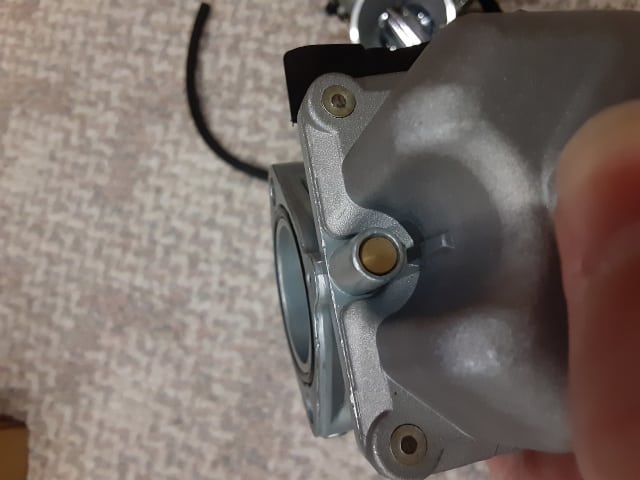
However, I can cover the location since both fuel/air screw locations are visible.
The stock carburetor air/fuel mixture screw is located on the underside of the carburetor’s outlet. Now it’s sealed, not allowing it to be adjusted, but if it wasn’t sealed, that screw is tough to access once the carburetor is installed. Therefore tunning this carburetor would be difficult. Again, impossible now since it’s sealed.
Also, the TBR7 stock carburetor fuel/air screw is on the outlet side of the carburetor, so it appears this screw would be used to adjust ‘extra’ fuel into the air stream for idle operations. But again, it’s sealed.
The Fuel/Air Screw On The Nibbi Carburetor (PE30)
The Nibbi carb’s air/fuel screw is accessible, unlike the stock carburetor. No metal blank blocking access.
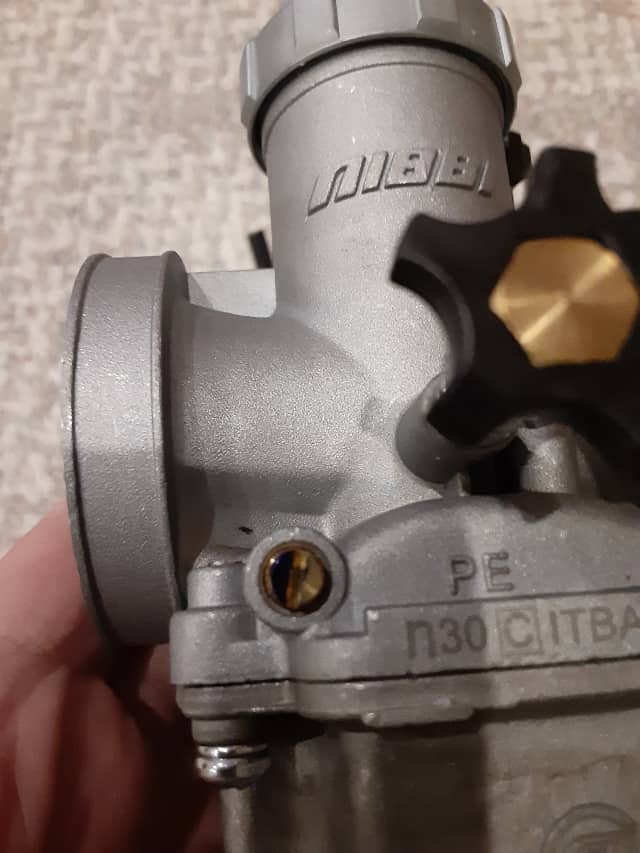
Better yet, the Nibbi carb air/fuel screw is on the side of the carburetor, allowing for air/fuel screw adjustments after the carburetor is installed on the motorcycle. This screw location is a real nice feature. Being able to make slight changes while the carburetor is installed and immediately notice their effect on the motorcycle engine will help fine-tune the TBR7.
Also, just tossing this out there, the air/fuel screw is on the inlet side of the carburetor. This position appears to mean the Nibbi carburetor adjusts airflow for low idle tunning of the engine. Just mentioning this to see there is a difference between the two carburetors.
Nibbi Carburetor and Stock Carburetor Throttle Slides
Now we get into the internals of both carburetors.
The stock carburetor throttle slide is smaller compared to the Nibbi carburetor. Not just smaller, the stock carb’s throttle slide is also lighter.
Let’s make comparisons between the two.
Carburetor Throttle Slide Sizes.
I covered it earlier; the TBR7 stock carburetor airflow channel narrows down inside the carburetor. This narrowing occurs in the jets area, so narrowing might be necessary for proper fuel pick up in the air stream. Maybe.
So, it’s no surprise the throttle slides of the carburetors are different.
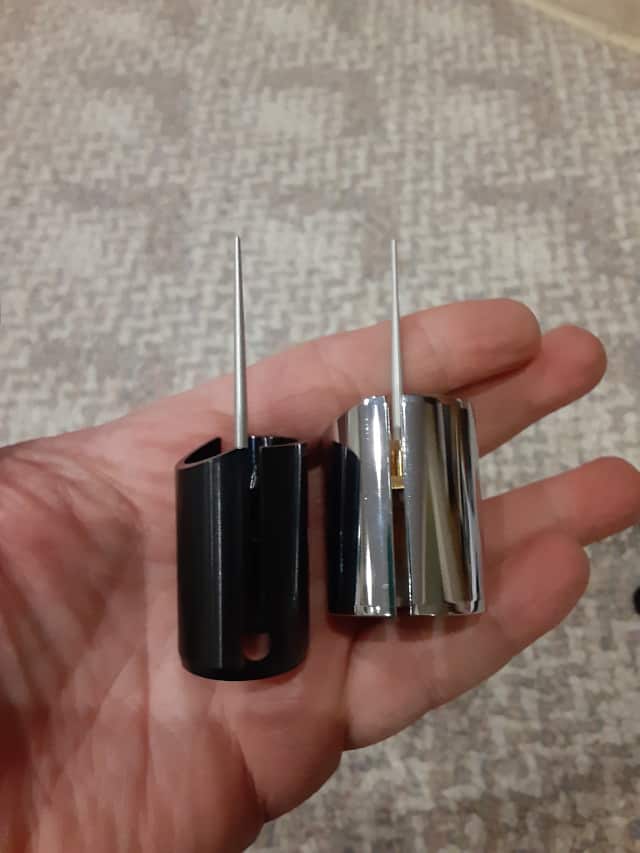
The Nibbi Carburetor (PE30) is much larger than the TBR7 stock carburetor. Here are the sizes:
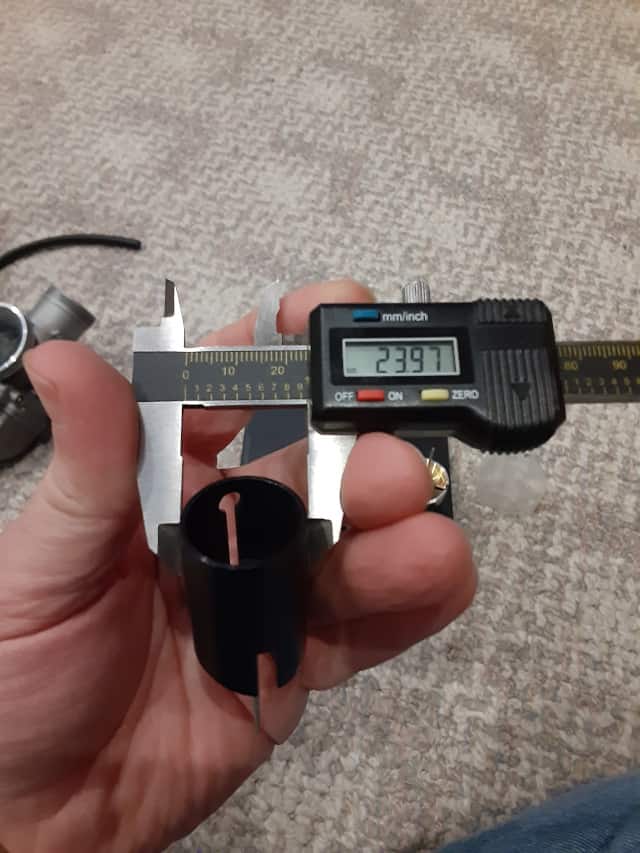
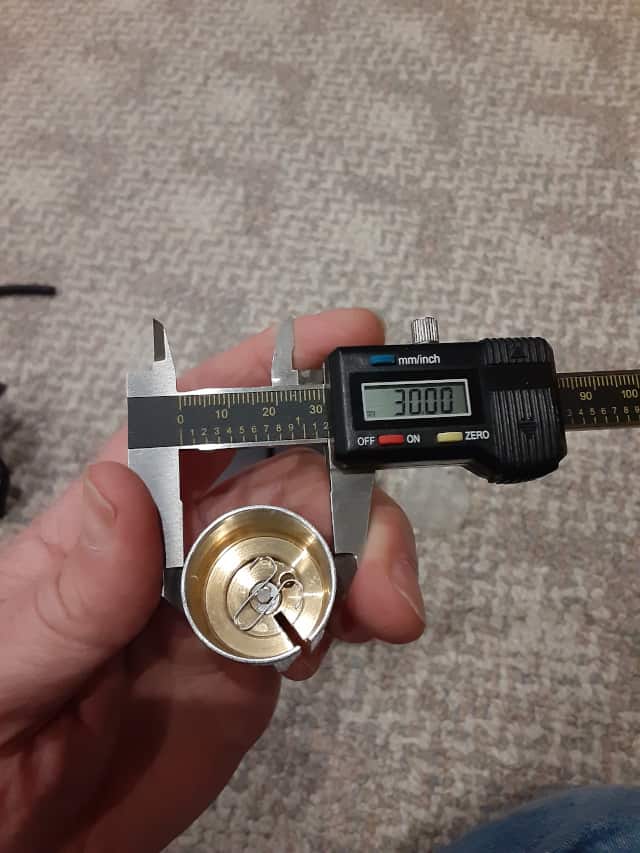
You can see there is a significant size difference, but again this is no surprise considering the size differences in the carburetors’ internal airflow channels.
Carburetor Throttle Slide Weights.
As you can see, the stock carburetor slide is lighter. Also, the Nibbi carburetor slide is much heavier, 72 grams heavier.
TBR7 Stock Carburetor:
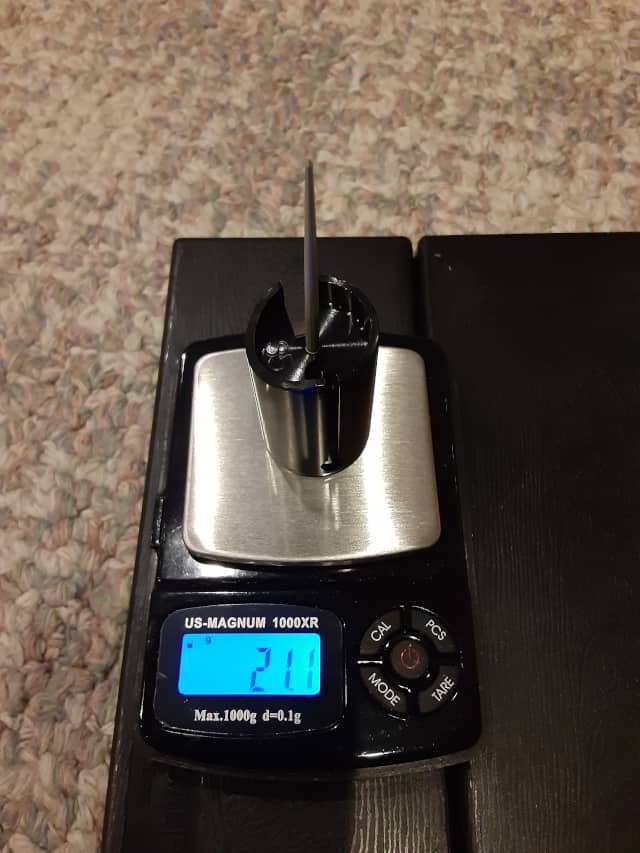
Now the Nibbi Carburetor:
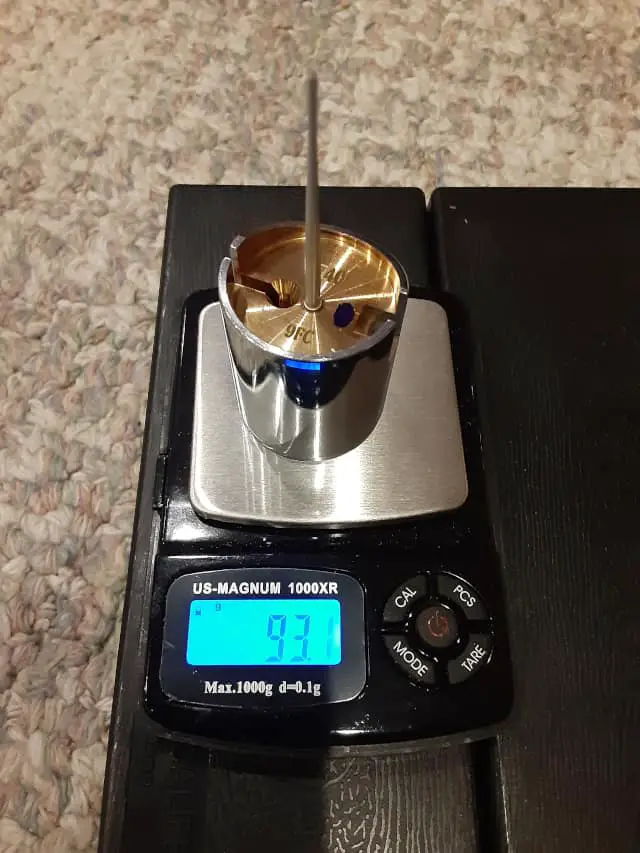
Now, what does this mean? Well, the throttle slide on the Nibbi Carburetor is larger, so it should require more material to manufacture. However, the amount of material is impressive. I show you the weights on the scale, but you would be impressed if you felt the difference in your hand.
How Does A Heavier Carburetor Throttle Slide Help?
Well, I tried to figure out why the bigger difference. Why did Nibbi invest so much more material in their throttle slide? Then it happened.
I slid the slides into the carburetors when I was done looking at them, and the stock slide well slid in as expected. But, the Nibbi throttle slide fell into the carburetor body with a solid ‘thud.’
I can imagine when you throttle down with Nibbi, the throttle wants to go closed, yet the inertia of the slide prevents too rapid of movements. A smoother operation, while a quick response to throttle changes. This is my theory; I hope to try it out when I get around to installing the Nibbi.
Nibbi and Stock Carburetor Throttle Slide Closing Springs
Now it’s not a surprise that the more significant throttle slide of the Nibbi carburetor will require a larger throttle slide spring. So much to discuss here, other than comparing the size.
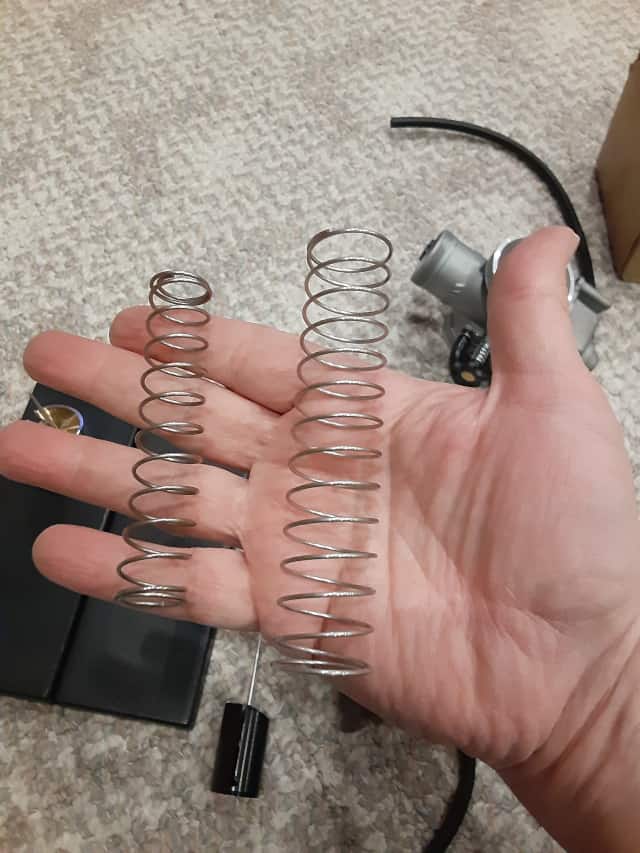
Nibbi Carburetor Choke Style vs. TBR7 Carb Choke Style
Now, this part gets interesting.
To help a colder engine start, carburetors have a ‘choke’ function to help enrich the fuel/air ratio. They are increasing the amount of fuel temporarily to aid in cold starts. The earlier Wikipedia article helped cover this.
So both the TBR7 stock carburetor and Nibbi Carburetor (PE30) have different methods to change the fuel/air ratio. One by reducing the amount of air, and the other by increasing the amount of fuel.
The Stock TBR7 Carburetor:
This carburetor choke’s down on the amount of airflow reaching the engine while managing to keep the fuel supply high enough to increase the fuel/air ratio.
The actual choke is a plate that usually sits in line with the airflow when the choke is off but then closes when the choke is on. The choke lever controls the rotation of the choke plate in and out of the choke position.

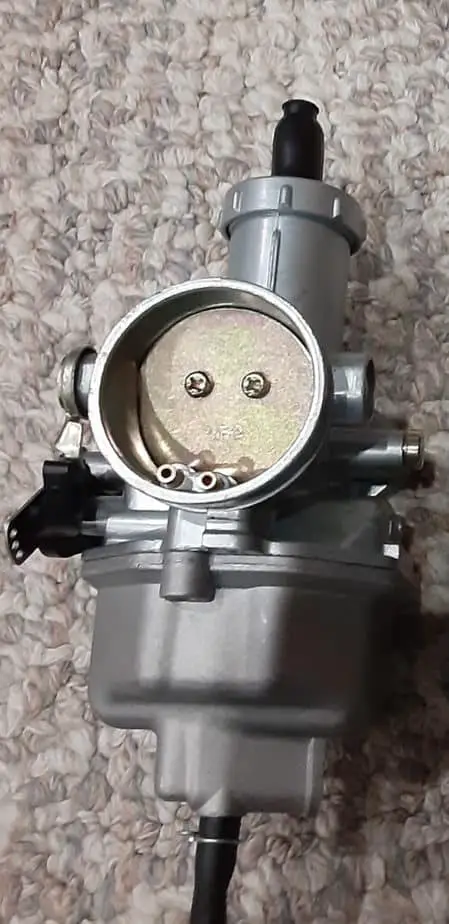
The Nibbi Carburetor Choke (PE30):
When the choke is ‘off,’ the carburetor choke knob is down. When the Nibbi carburetor choke is ‘on,’ the choke knob is up.
A small port on the carburetor outlet is closed when the choke is off. Here you can see the color of brass blocking the hole.
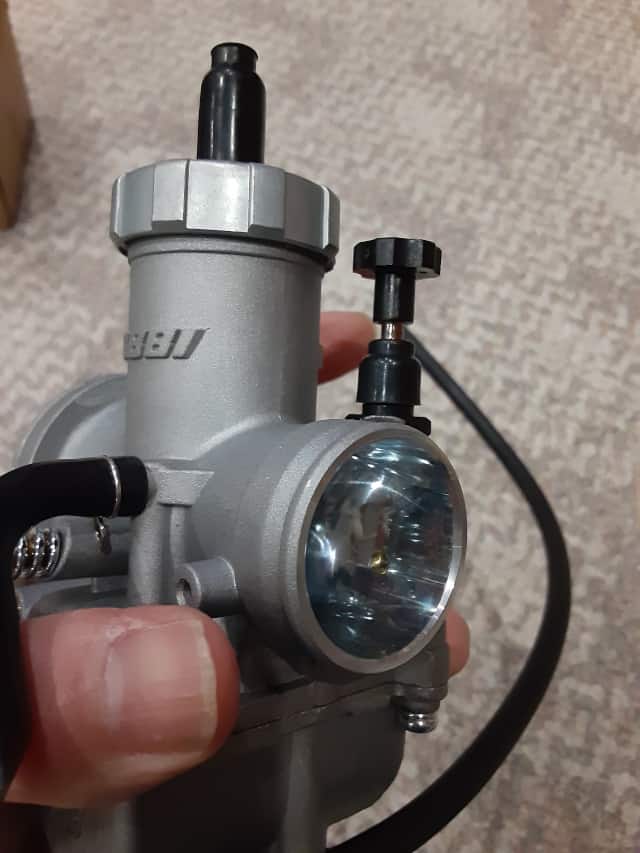
When the carburetor choke is on, the port is open. Here you can see no brass color blocking inside the hole. This port allows fuel to pass up the carburetor bowl and be drawn into the air stream, increasing the amount of fuel entering the engine.
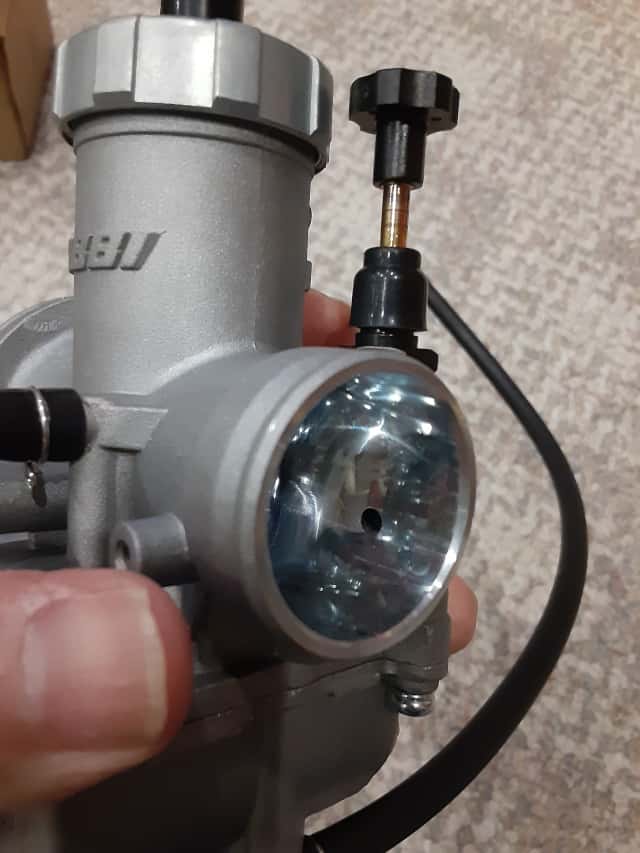
Any Real Difference Between The Chokes?
The only real impact is that the TBR7 carburetor choke plate is an airflow restriction even when it’s off, and it permanently sits in the carburetor’s inlet.
This is just an observation.
My Overall Quick Review Of The Carburetor Differences?
In my opinion, I anticipate the Nibbi Carburetor will be much better than the TBR7 ever was. For a couple of reasons:
- The Nibbi bowl allows access to the jets to increase and decrease their sizes fine-tuning the engine performance.
- The Nibbi slide is thicker and weights more to prevent erratic movements and quick closing when needed.
- The Nibbi airflow through the whole carburetor minimizes restriction.
- The Nibbi choke, whether on or off, doesn’t interfere with airflow.
I can’t wait to get time to install the Nibbi carburetor and give you feedback back whether the Nibbi earned its name middle name, “Racing.”
Thanks for reading along, and remember, Ride Safe, Ride Fun!
Click To See My Recommended
TBR7 Upgrades
Author’s Notice: This page contains affiliate links, for which I may earn a commission by their use. Also, as an Amazon Associate, I earn from qualifying Amazon purchases.
My Nibbi Carburetor (PE30) Shopping List
|
|
|---|---|
| The Nibbi Carburetor (PE30) | 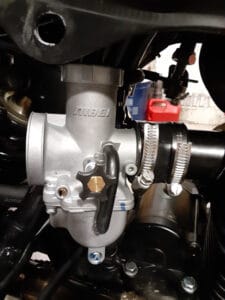 Click For Current Prices. |
| Nibbi Original High Performance Intake Manifold and Boot Connector |
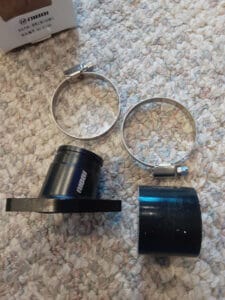 Click For Current Prices. |
| 20 Pieces Nibbi Carburetor Main Jet Kit | 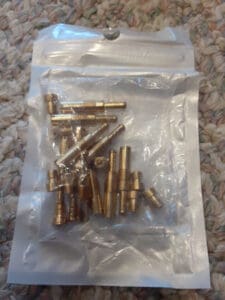 Click For Current Prices. |
| Nibbi Motorcycle High Performance Air Filter |  Click For Current Prices. |

Hi I’m Tom, A New Motorcycle Rider and Blog Author.
I am a new rider(Pa Learners Permit at the end of 2020, and I received a Pa Motorcycle License in 2021 after passing a Motorcycle Safety Course).
I bought my first motorcycle, a TaoTao TBR7, at the beginning of 2021 and have been doing upgrades on that motorcycle since.
I added to my motorcycle collection by buying a Boom Vader Gen 2 in 2022, and that Grom-Clone motorcycle has been upgraded by me as well.
I continue to ride my Boom Vader Gen 2 motorcycle as well as my TaoTao TBR7 dual-sport bike.
Read more on my About Me page.
Fun Fact: I’ve only been on one group ride.
